Giant’s Trance Advanced Pro 29 full-suspension mountain bike was released at the end of 2021, getting a complete overhaul with a new carbon frame, updated geometry and even more suspension travel.
When it comes to intention, despite the moderate amount of travel on tap, Giant still refers to the Trance as a trail bike, only one that’ll now tackle tough terrain faster.
Since first reporting on the updated Trance Advanced Pro 29 range late last year, like everything else in the modern world, prices have crept up. In fact, the Trance Advanced Pro 29 1 model reviewed here has gone from £5,999 up to £6,999.
So, just how does the new Trance Advanced Pro 29 handle on the trail and is it worth all of that cash?
Giant Trance Advanced Pro 29 1 frame and suspension details

Giant offers three different carbon builds (and two in aluminium). The Advanced Pro 1 seen here is the mid-price carbon frame option.
In a bid to boost the Trance Advanced Pro 29’s capabilities, rear-wheel travel has been upped from 115mm (4.5in) to 120mm (4.7in) on this latest bike.
Giant has stuck by its tried and trusted Maestro suspension layout, which uses two co-rotating links to attach the rear triangle to the main frame. The upper link – which is forged composite rather than aluminium – drives the near-vertically mounted shock.
Five alive
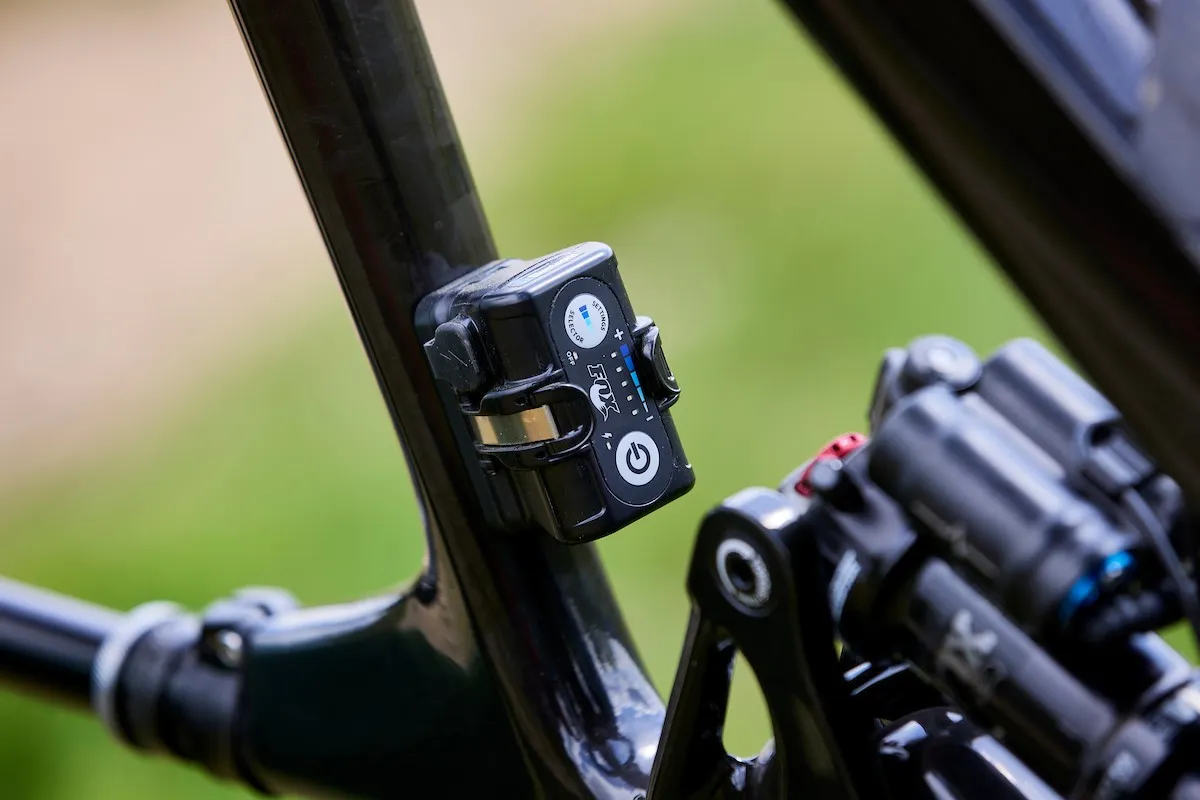
The Trance Advanced Pro 29 1 is the only bike in the range to come with Fox’s automated suspension system, Live Valve. The system, which automatically firms up your fork and shock depending upon the terrain, was launched back in 2018 but has since been updated for 2022.
Here, it’s designed to control the 120mm of rear-wheel travel (and 130mm of fork travel) and make the Trance Advanced Pro 29 1 as efficient and fast as possible.
Fox claims Live Valve 1.5 has been altered in a number of ways, with a focus on improving descending capability.
By default, Live Valve firms the fork and shock up (but no longer locks them out). However, they will both open up when the bike is pointing downhill or if you encounter a bump.
In a bid to make Live Valve bikes more reactive and quicker to respond to changes in gradient, Fox has reduced the decline angle threshold, meaning a shallower gradient will force the damping to open up.
Fox has also lengthened the duration that the fork and shock will remain open (the pre-set timer means the suspension will lock back out if a bump isn’t detected again). The bump threshold (the size of the bump impact) that’s required to activate the system has also been decreased.
The Live Valve shocks have been updated and now use a new main piston, which enables a broader tuning range.

Another plus of the update is the inclusion of Bluetooth, enabling you to connect your phone (via the new Live Valve app) to your bike to better tune the settings.
The app is very intuitive to use and allows you to tune how much low-speed compression damping is used within the five settings (and you can download even more settings if you wish). It’s simple, quick and easy to use.
The five settings in question are: 1. Open, 2. Comfort, 3. Sport, 4. Firm and 5. Climb. For reference, Fox says the Open setting “keeps your suspension open for the smoothest ride".
The Climb setting is said to “keep the fork open for increased traction on technical terrain and increases rear thresholds. Sport behaviour on flat terrain and descents”.
While the Open setting is designed to be the most sensitive (it’ll take less force from a bump to open the system up), the Climb setting, at the other end of the scale, is designed to make your ride more efficient and requires a bigger impact to open the valves up.
The calibration process hasn’t really changed, though, and I’d say it’s arguably a little fiddlier than that of RockShox Flight Attendant.
Added extras
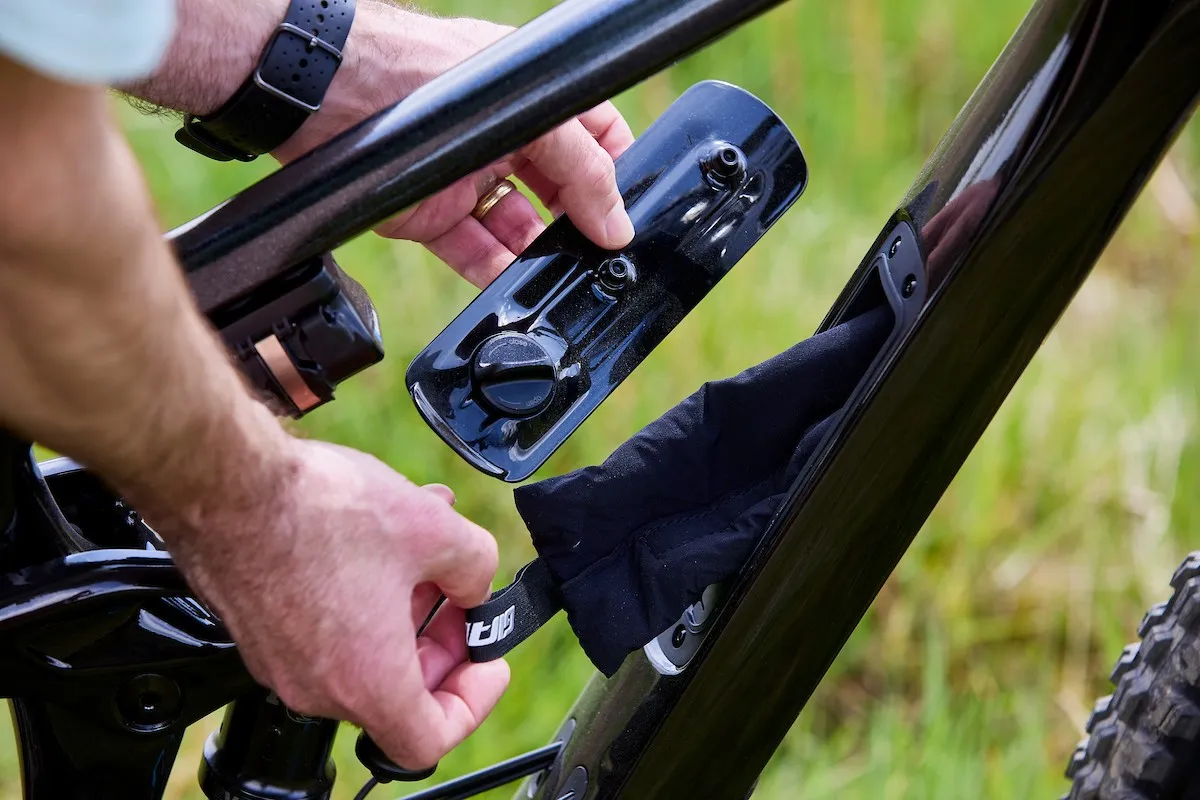
Because the Trance Advanced Pro 29 1 uses a totally new frame, it’s no surprise to find out there’s a host of new features and details included.
Giant has included some internal down tube storage beneath the bottle cage, enabling you to stow essentials (or just a load of snacks) inside the padded sheath that's included.
There are also new, integrated cable ports, which look neat and are claimed to help reduce any irritating cable rattle.
In a similar vein, thanks to the decent amount of integrated chainstay protection, there should be very little noise coming from the bike.
In terms of clearance, Giant claims you’ll get a 2.5in tyre through the rear triangle.
Giant Trance Advanced Pro 29 1 geometry
In line with every other Trance model Giant has launched over the last year or so (including the Trance X 1 I reviewed a while back), the new Trance Advanced Pro 29 1 gets the same flip-chip treatment.
The oval chip is located in the seatstay/rocker pivot and gives riders the choice between a high and low setting. Shifting from one to the other alters the head and seat tube angle by 0.7 degrees and shifts the bottom bracket by a noticeable 10mm.
In the low setting, I measured the head angle to be 64.8 degrees and the seat angle 76.6 degrees with my saddle set at my preferred height.
When it comes to reach (the figure that helps determine how roomy a bike will feel when you’re stood up out of the saddle), I measured the Trance Advanced Pro 29 1 in medium to be 455mm, putting it line with much of the current competition on the market.
These figures add up to give a front centre of 765mm (the horizontal distance from the centre of the bottom bracket to the centre of the front wheel axle). This is matched with a 440mm effective chainstay length (measured from the centre of the bottom bracket to the centre of the rear axle).
A figure that really stands out is the 45mm of bottom bracket drop (again, in the low setting). That sits the bottom bracket at just 326mm off the floor, which is pretty low by today’s standards.
| | S | M | L | XL | ||||||||
|---|---|---|---|---|---|---|---|---|---|---|---|---|
| Low | High | Low | High | Low | High | Low | High | |||||
| Seat angle (degrees) | 77.2 | 78 | 76.3 | 77 | 76.3 | 77 | 76.3 | 77 | ||||
| Head angle (degrees) | 65.4 | 66.2 | 65.5 | 66.2 | 65.5 | 66.2 | 65.5 | 66.2 | ||||
| Chainstay (mm) | 439 | 437 | 439 | 437 | 439 | 437 | 439 | 437 | ||||
| Seat tube (mm) | 420 | 430 | 465 | 496 | ||||||||
| Top tube (mm) | 561 | 559 | 599 | 597 | 626 | 624 | 663 | 661 | ||||
| Head tube (mm) | 100 | 110 | 120 | 130 | ||||||||
| Fork offset (mm) | 44 | 44 | 44 | 44 | ||||||||
| Trail (mm) | 126 | 120 | 126 | 120 | 126 | 120 | 126 | 120 | ||||
| Bottom bracket drop (mm) | 45 | 35 | 45 | 35 | 45 | 35 | 45 | 35 | ||||
| Wheelbase (mm) | 1,166 | 1,165 | 1,195 | 1,194 | 1,224 | 1,223 | 1,263 | 1,262 | ||||
| Standover (mm) | 729 | 737 | 723 | 732 | 746 | 755 | 751 | 760 | ||||
| Stack (mm) | 610 | 604 | 619 | 613 | 628 | 622 | 637 | 631 | ||||
| Reach (mm) | 422 | 430 | 447 | 455 | 472 | 480 | 507 | 515 | ||||
| Handlebar width (mm) | 780 | 780 | 780 | 780 | ||||||||
| Stem length (mm) | 40 | 40 | 50 | 50 | ||||||||
| Crank length (mm) | 165 | 170 | 170 | 170 | ||||||||
Giant Trance Advanced Pro 29 1 specifications
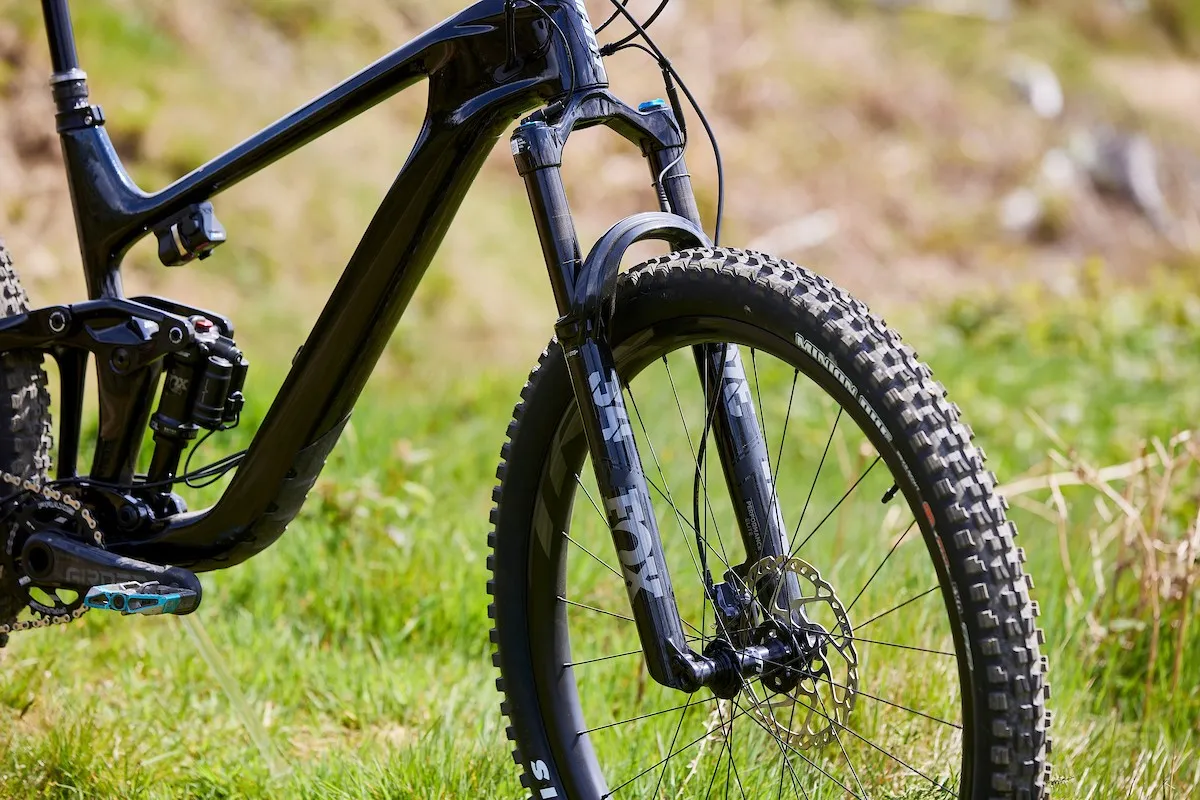
I’ve already mentioned the Fox Live Valve system, but it’s probably worth talking about the fork and shock it’s controlling.
Up front, Giant has plugged in a Fox 34 Performance Live Valve fork. There’s 130mm of travel on offer and you can externally adjust the damper’s rebound speed and the low-speed compression (via a small Allen key at the top of the fork leg). Spring pressure and volume can also be adjusted.
Understandably, it’s the Live Valve system that does the lion's share of taming the travel (assuming you’ve set the right spring pressure).
At the rear sits Fox’s Performance Elite Live Valve shock. Again, air pressure (and volume) along with rebound can be tweaked easily enough.
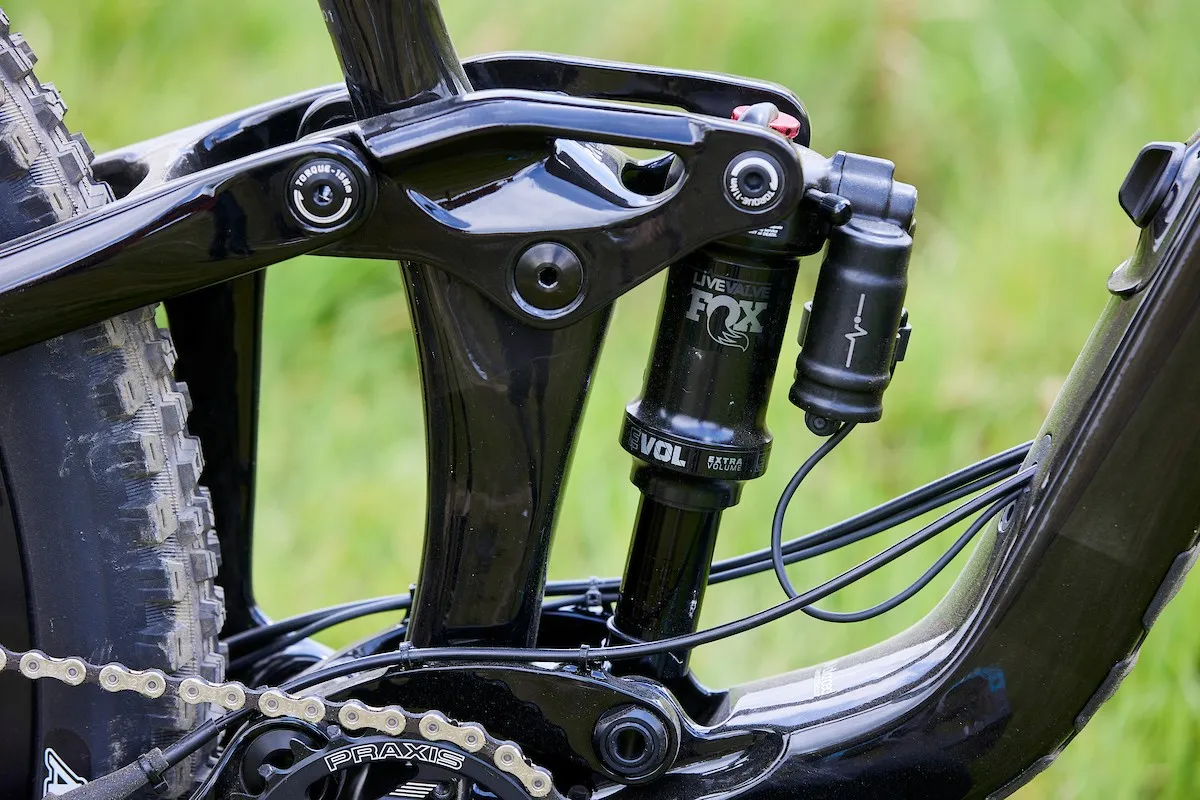
Using the Live Valve app enables you to adjust the levels of low-speed compression for each of the five factory-set ride settings.
Brakes and gearing come from Shimano’s XT stable and are hard to fault. The four-piston brakes work incredibly well as long as they’re bled properly, otherwise they can suffer from wandering bite points.
Praxis supplies its carbon Girder crankset, while Giant covers almost every other part on the bike, including the bar, stem, grips, saddle and TRX 2 carbon wheelset.
These are wrapped in Maxxis rubber, with a Minion DHF at the front and a relatively fast-rolling Aggressor at the rear.
The TranzX dropper post can be adjusted internally in 5mm increments to give between 140 and 170mm (on the medium) of travel. This is a really neat feature and means you can ensure you’re getting maximum saddle clearance.
Overall weight for the medium bike tested here is 13.78kg without pedals fitted.
Giant Trance Advanced Pro 29 1 ride impressions
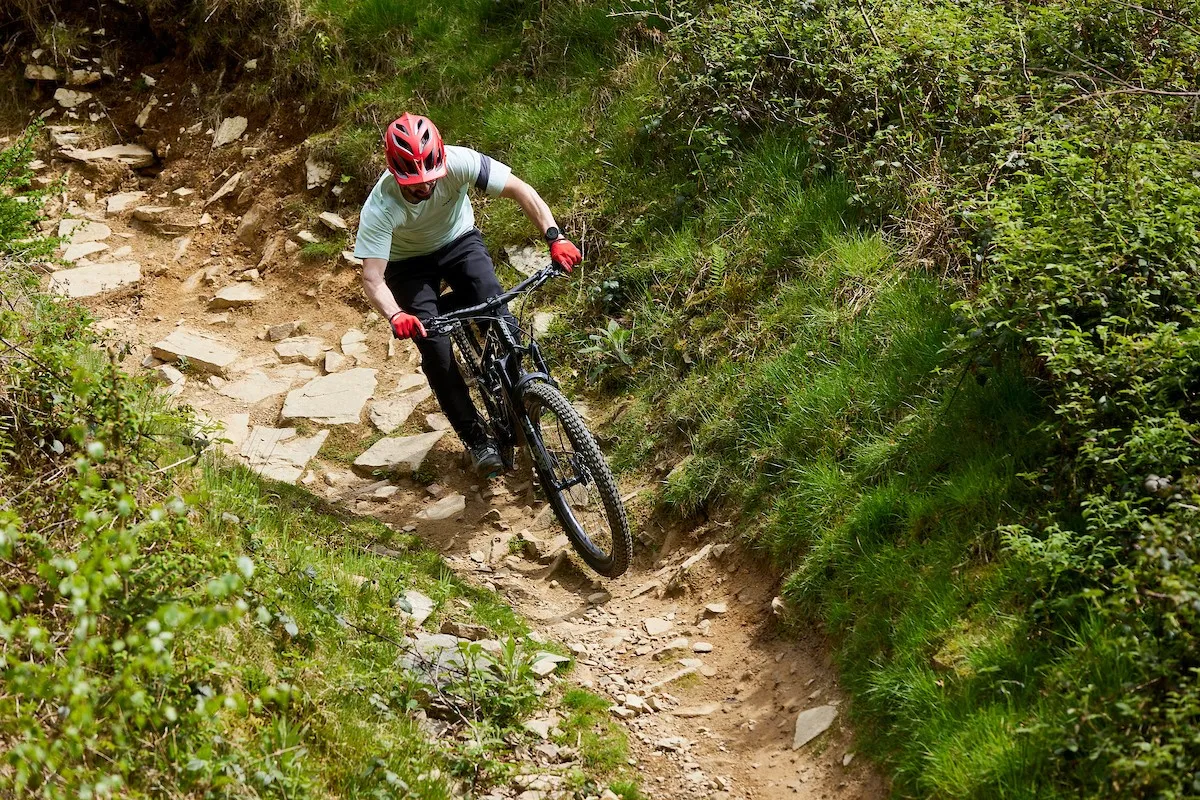
As the Trance Advanced Pro 29 1 is a trail bike, I attempted to expose the bike to a wide variety of trail types and conditions.
These consisted of beaten-up trail centre laps, local loops on mixed terrain (road, gravel and dirt) and miles of natural singletrack, along with more testing descents you’d normally ride on a longer-travel trail/enduro bike.
Setting up the Giant Trance Advanced Pro 29 1
Getting the Live Valve system calibrated is straightforward enough, though due to the position of the battery/controller on the Trance Advanced Pro 29 1, I did find it a little fiddly.
That’s simply because you have to get into a position to ensure you can see the lights on the battery/controller unit, which is fixed to the underside of the top tube.
It sounds easy enough, but because you need to keep the bike still while doing this, pressing and holding buttons and checking the right lights are flashing at the right times takes a bit of patience.
I settled on 27 per cent sag at the rear with the rebound damping on the rear shock left fully open. At 67kg, that equated to 162psi in the shock.
At the front, I used a 3mm Allen key to wind off any low-speed compression, set the rebound to 14 clicks from fully closed and put 78psi in the fork’s air spring.
Giant Trance Advanced Pro 29 1 climbing performance
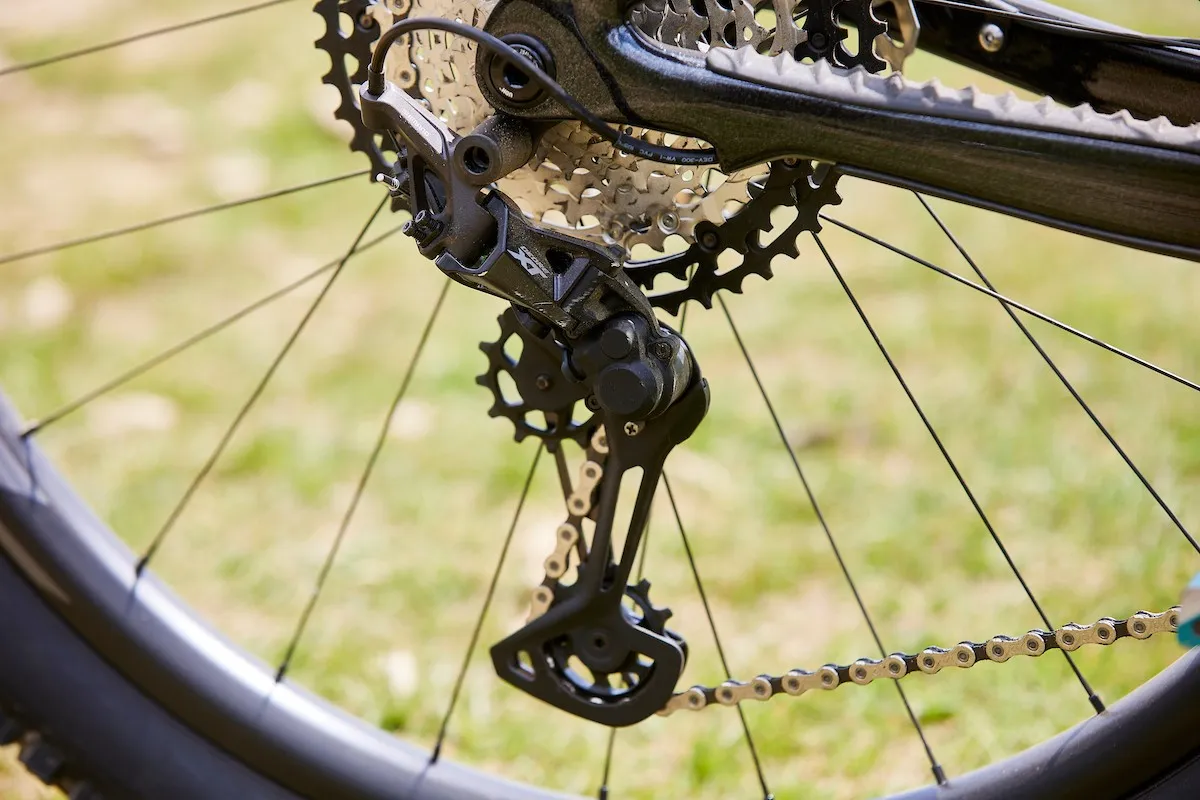
The Trance Advanced Pro 29 1 is no slouch on the climbs, but it’s more like an eager trail bike than one of the best downcountry bikes.
Despite matching the likes of the Transition Spur when it comes to rear-wheel travel, the Trance Advanced Pro 29 1 weighs close to two kilos more than the Spur I tested in 2021.
It’s by no means slow when working against gravity, and the combination of the steep seat angle and Live Valve system really help to eke out efficiencies when it matters. I was consistently impressed by what I could claw my way up when riding the Trance Advanced Pro 29 1.
In Live Valve’s Climb mode (which I ended up spending a lot of time in), it felt as though none of my effort was wasted while piling on the power, yet despite the firm back end, the rear tyre still managed to find traction over loose, rocky surfaces.
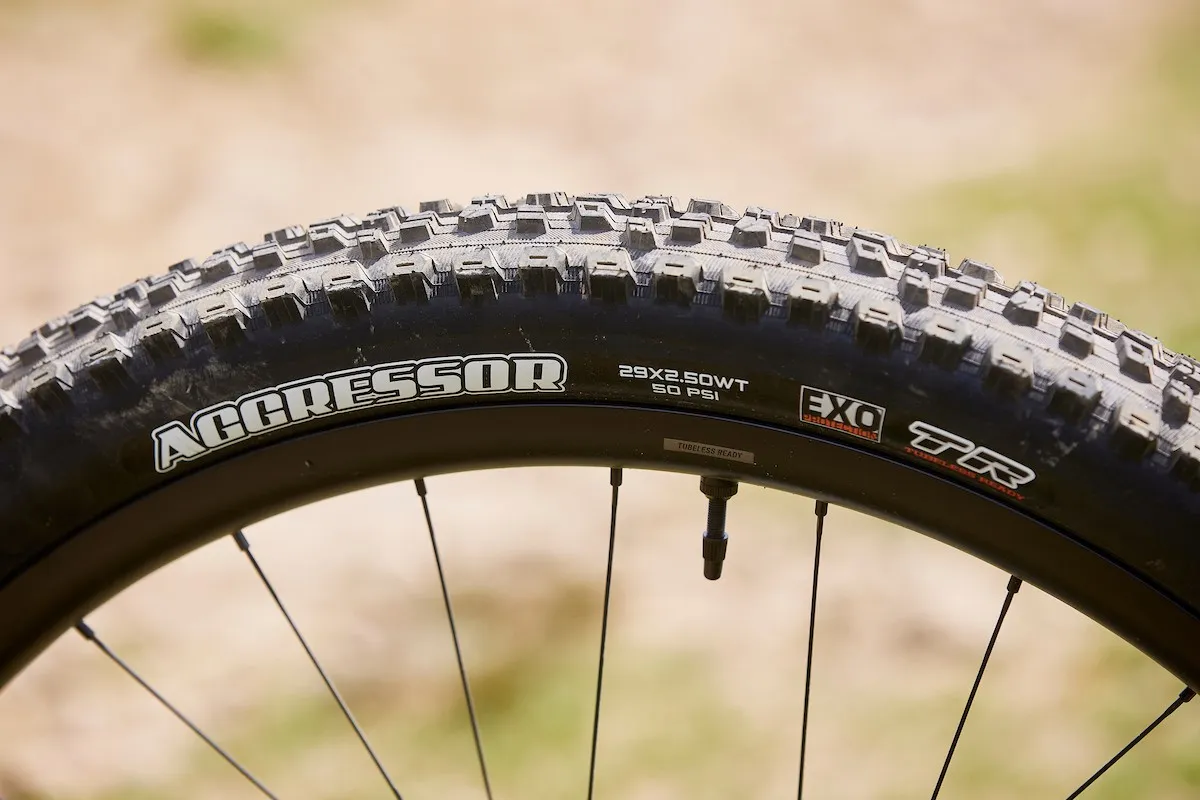
For reference, leave Live Valve off and the Trance Advanced Pro 29 1 will bob a little under power, so it’s good to know the system is doing its job when called upon.
While the seated position provides a really comfortable place from which you can sit and spin your way up inclines, I did find myself having to actively shift forward on the saddle to keep the front wheel from lifting on steeper pitches or through uphill switchbacks.
That’s not too dissimilar to how I found the Nukeproof Reactor ST, though I’d say the Trance Advanced Pro 29 1 feels more efficient on the whole.
Finally, although I’m a massive fan of a low bottom bracket, there were instances when I managed to clip a pedal here and there.
This wasn’t a regular occurrence and only when tackling particularly chunky, steppy climbs. I’ll live with this, though, because all of that bottom bracket drop means you genuinely feel as if you're hunkered down between the axles, which feels great through the turns… but more on that later.
Giant Trance Advanced Pro 29 1 descending performance

Pointed downhill, the Trance Advanced Pro 29 1’s trail bike credentials really start to shine through.
That’s not to say it delivers a faultless ride, but this bike clearly has potential when it comes to descending.
How does Fox Live Valve compare to RockShox Flight Attendant?

Having now spent a decent chunk of time riding on the RockShox Flight Attendant system, which is designed to achieve similar results to Fox’s Live Valve, along with the previous version of Live Valve, I thought it’d be wise to cover off some of my findings.
Compared to the previous generation, the updated Live Valve 1.5 system feels less intrusive and seems to work in a more subtle way in order to meet the demands of the trail.
While it’s hard to forget about entirely, I certainly felt I could ignore it and trust that it was changing the settings as and when necessary.
The new app also improves the overall experience and is easy and quick to use with noticeable results.
I did, however, find myself wanting to change Live Valve modes while riding.
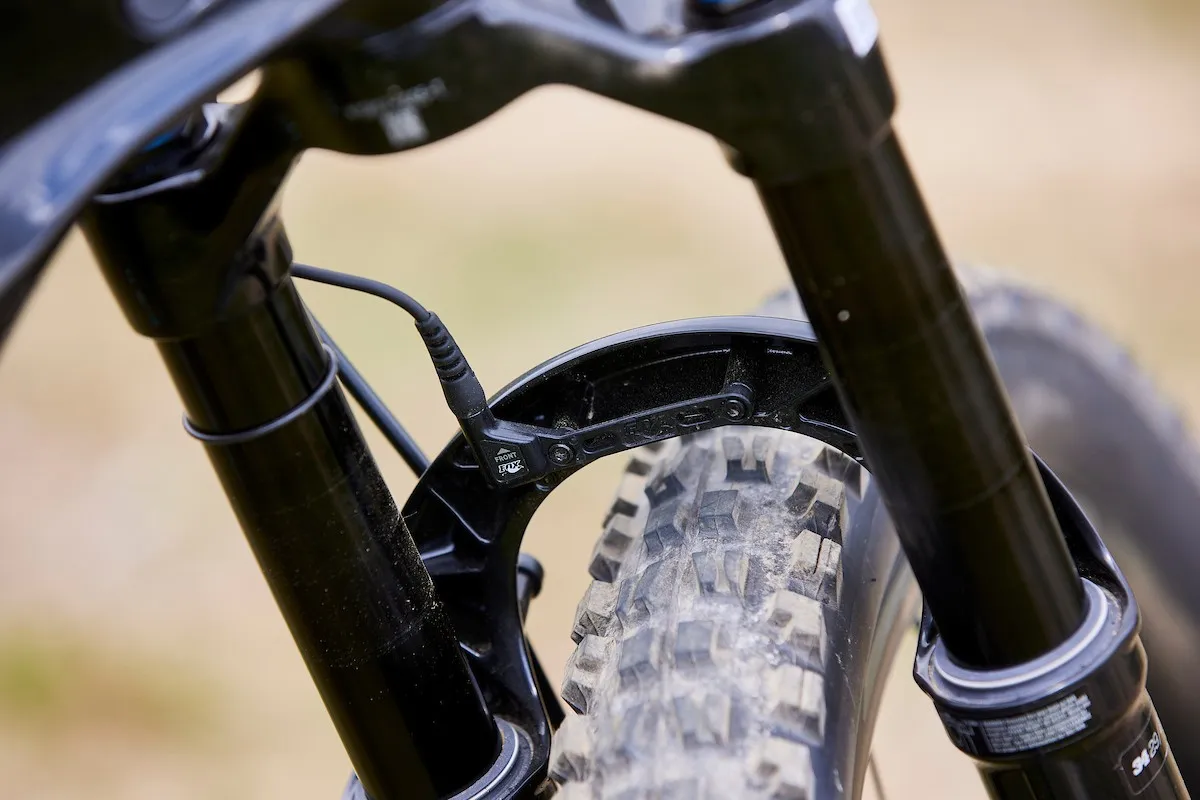
This was certainly something I did a lot of early on when getting familiar with the Trance Advanced Pro 29 1, but there were times when riding trails blind that I felt I could benefit from being in a different mode.
That means you can either reach under the top tube and hope you toggle the system into your mode of choice or get off the bike and look at the battery/control unit to ensure you’ve selected the right setting.
It's a bit of a pain, but not the end of the world because for the most part, it’s a set-and-forget bit of kit. That said, should you wish to change settings on the Flight Attendant system, you can do this while still cruising along. Admittedly, it's easier when stationary.
Another key difference between the Fox and RockShox systems is the noise each one makes as it automatically changes your suspension settings. While you can quite easily hear Flight Attendant working away, there’s not a lot of noise coming from Live Valve.
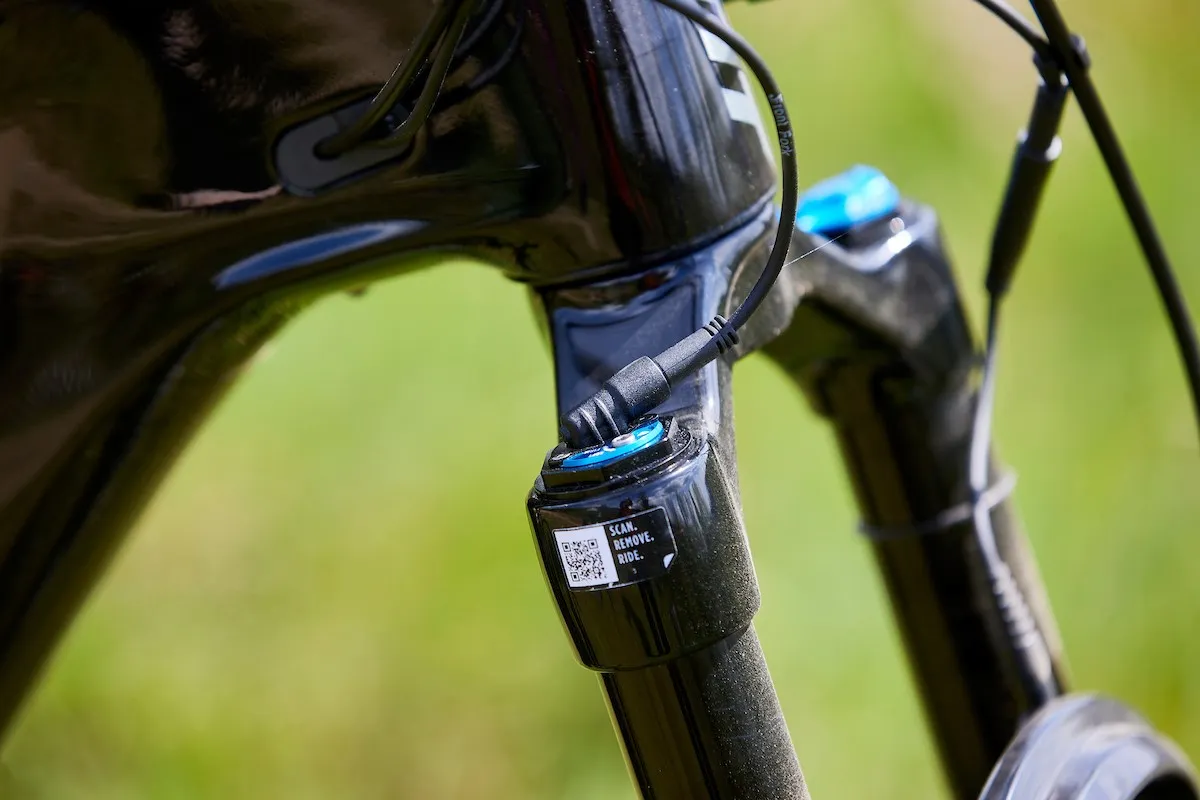
It’s not quiet, although that’s not down to the system itself, but the additional cables required for it to work.
When Flight Attendant functions, it emits a futuristic buzz, but it’s wireless and totally rattle-free. I’ve not had a Live-Valve equipped bike yet that doesn’t suffer from some kind of cable rattle. Sure, it’s hard to rectify entirely, but it’s a frustration nonetheless.
And that brings me onto my final point. While both systems work well, the way in which Live Valve is packaged and integrated into the bike feels complex and less refined than the wireless Flight Attendant system.
We’re not exactly talking the Walkman versus iPod here, but it’s not far off. I for one would rather not have extra cabling and rattles to keep on top of if I've got the choice.
Capable when it counts but not the smoothest

I spent the majority of my time in the Climb or Sport modes, where I felt I was getting the most from the Live Valve system, keeping the bike feeling energetic when blasting along mellow, smooth sections of trail but still forgiving enough as the bumps started coming thick and fast.
Out of the saddle, the Trance Advanced Pro 29 1 felt really well-proportioned for my 172cm frame, with ample room to move myself around.
The low bottom bracket and slack head angle certainly help boost stability at higher speeds and can easily lull you into hitting sections harder than you might think possible on a bike with just 120mm of rear-wheel travel.
This feeling carries over through the turns, too, where it manages to balance a surefooted feel with agility well. That means on loose, blown out corners you feel confident committing to a line, but when you do need to make those last-minute adjustments, the Trance Advanced Pro 29 1 doesn’t feel awkward or cumbersome to flick onto a different line.
The sense of confidence that comes from the geometry and the sharp and supremely powerful Shimano XT brakes means you can drop into steep sections of trail or technical chutes at pace. However, it’s in these situations when you can, at times, get caught out a little.
That’s not just because the rear Maxxis Aggressor tyre doesn’t offer the best braking traction.
When attacking fast, rough sections of trail, you can feel you’re reaching the limits of the Trance Advanced Pro 29 1’s suspension.
That’s not necessarily down to the 120mm of rear-wheel travel, but more to do with the 130mm Fox fork up front. The Live-Valve equipped Performance Elite 34 isn’t particularly forgiving when faced with repetitive impacts and manages to transmit quite a bit of feedback through the bars and into your hands.

Even after reducing the air-spring pressure in the fork (and backing off all low-speed compression damping) and dropping tyre pressure slightly, although the feedback was reduced, I never felt truly comfortable on longer descents.
I was willing to put up with this, though, because I enjoyed my time aboard the Trance Advanced Pro 29 1.
It is a bit of a conundrum, though. On the one hand, the well-proportioned geometry is what gives the bike its confidence and poise, but on the other, when you do start pushing harder because of those figures, certain aspects of the spec seem to hold it back a little.
As this feels (and weighs) more like a trail bike, maybe switching to a stouter fork with a more forgiving damper would rectify this and make the most of the geometry.
How does Giant Trance Advanced Pro 29 1 compare?
Although Giant pitches the Trance Advanced Pro 29 1 as a trail bike, its travel figures sit close to a number of the best downcountry-style bikes, including the Nukeproof Reactor ST, Transition Spur and the winner of our Trail Bike of the Year in 2022, the Trek Top Fuel 8.
While the Trance Advanced Pro 29 1 doesn’t feel quite as sprightly as the Spur, Top Fuel or Epic EVO, I think it climbs better than the Reactor ST, but feels just as confident on the way back down.
What it lacks in fast-rolling, ground-covering pace compared to the lighter-weight bikes mentioned above, it more than makes up for in surefooted confidence when it comes to going downhill.
Giant Trance Advanced Pro 29 1 bottom line

Giant’s Trance Advanced Pro 29 1 is a solid all-rounder. The geometry is good and helps provide a very confident position on the bike, which is a real plus when tackling demanding trails.
Fox’s Live Valve system does boost efficiency on the one hand, but adds weight and complexity on the other, but Giant does offer two other Trance Advanced Pro 29 models without the fancy electronics if it puts you off.
It's the overall intent of the Trance Advanced Pro 29 1 that confuses me a little, though.
Giant could have made it lighter and more in tune with other popular downcountry bikes, or specced it a little differently to really allow riders to make the most of the relatively aggressive geometry.
As it stands, it sits somewhere in between the two. That’s not to say that’s a bad thing, but it does make it more of a jack of all trades, doing a lot of things well enough, but never really excelling at anything specific.
Product
| Brand | giant |
| Price | 8799.00 AUD,6799.00 EUR,6999.00 GBP,7000.00 USD |
| Weight | 13.7800, KILOGRAM (M) - without pedals |
Features
| Fork | Fox 34 Performance Elite Live Valve, 130mm (5.1in) travel |
| br_stem | Giant Contact SL 35, 40mm |
| br_chain | KMC X-12 |
| br_frame | Advanced carbon, 120mm (4.7in) travel |
| Tyres | Maxxis Minion DHF 3C MaxxTerra EXO 29x2.5in (fr) and Maxxis Aggressor EXO 29x2.5in (r) |
| br_brakes | Shimano Deore XT M8120 (180mm rotors) |
| br_cranks | Praxis Girder Carbon |
| br_saddle | Giant Romero SL |
| br_wheels | Giant TRX 2 Carbon wheelset |
| br_headset | Giant |
| br_shifter | Shimano Deore XT |
| br_cassette | Shimano Deore XT |
| br_seatpost | TranzX, 140-170mm |
| br_gripsTape | Giant Tactal Pro Single |
| br_handlebar | Giant Contact SLR, 780mm |
| br_rearShock | Fox Performance Elite Live Valve |
| br_bottomBracket | Shimano Press Fit |
| br_availableSizes | S, M, L, XL |
| br_rearDerailleur | Shimano Deore XT |
